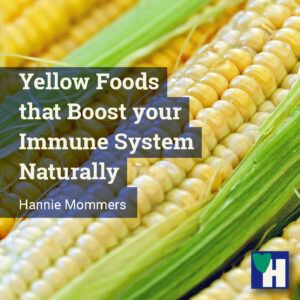
Foods that boost your immune system naturally are not only important in these pandemic times. They will always improve your health status. Take for instance yellow foods.
They’re sunny, glowing, and radiant, contain dietary fibers, and amino acids. Yellow foods are good for your skin. And, by the way, you can make delicious dishes with it.
Our series about food with color consists of 6 articles: red, orange, yellow, white, green, and blue/purple. These articles also contain a lot of tips and recipes. Many of these other colored foods are foods that boost your immune system naturally as well.
Some of the links are affiliate links. As an affiliate associate, we earn a commission when you purchase any of the products offered through the shared links at no extra cost for you. This helps us maintain this website.
Table of contents
Yellow food is sunny, glowing, and radiant
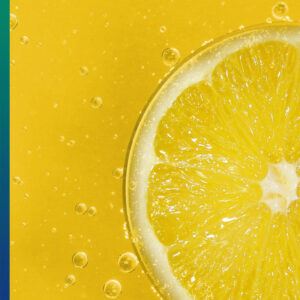
Yellow fruits and vegetables contain phytochemicals, antioxidants, vitamins, and minerals that can combat severe illnesses and heart issues.
One of the phytochemicals in yellow fruits and vegetables is called bioflavonoid. This is sometimes referred to as Vitamin P. This element is especially helpful for the skin to replenish itself.
Yellow food has two big benefits: it’s a mood booster and it’s very beneficial for your skin. Like its color, it’s sunny, glowing, and radiant.
Related: Does Vitamin C boost your Immune System in a Successful Way?
Non-digestible dietary fibers
People sometimes ask us how serious all the health claims about food are. In general, a diet high in fruits, vegetables, grains, legumes, and plant-based beverages have long-term benefits. There is unanimous scientific consent about this claim.
There is also very strong scientific evidence that some of the plant fibers, which you eat but do not digest (the so-called non-digestible dietary fibers), reduce the risk of some types of cancer and coronary heart disease. These fibers are often used to produce medicines.
The problem though is that some commercial companies try to monopolize certain health claims connected with one or two food compounds. Often using obscuring language. Moreover, most of these claims have no scientific base whatsoever. So it’s a confusing world out there and we have to make up our own minds as well.
Mind the amino acids
Vitamin A and C fall in the same category as dietary plant fibers. These vitamins also have established health benefits against cancer. Yellow fruits contain lots of both types of vitamins. Types of foods that boost your immune system naturally.
Our body also needs amino acids. Amino acids are the building blocks of body tissue and a source of energy. The body needs all the 21 known types of amino acids. Of these, 9 must be obtained from food. The body cannot synthesize them from other compounds.
Yellow fruits and vegetables all contain amino acids. To be sure that we get enough of the 9 types mentioned, it’s important to eat as great a variety of plant-based foods as possible. For us, this is specifically important because we only eat a very limited amount of meat (only a little bit of turkey, chicken, or fish, with a maximum of 150 grams a week).
The best skincare
When it comes to building tissue and amino acids, a good example is Calendula. I have several tubes of Calendula ointment which I use on scars or dark spots on my skin. The reason I have several tubes is I lend them often to people to try them. Which happens when you are enthusiastic about something, doesn’t it? 🙂
Calendula, also known as Marigolds, and other yellow food have a lot of retinol, a type of Vitamin A1 that has a constructive effect on acne and wrinkles in order to reverse the damage.
You don’t have to buy expensive anti-aging products, but instead are better off spending this money on organic yellow produce or grow some in your kitchen garden.
Yellow fruits
- Apricot
- Banana
- Mango
- Lemon
- Peach
- Pineapple
Yellow vegetables
- Corn
- Pumpkin
- Yellow pepper – fibre, proteins and iron
- Bell pepper – vitamin C
- Squash
- Yellow beans
- Yellow potatoes
Yellow spices
- Ginger
- Saffron
- Curcumin / Turmeric
Yellow flowers
- Dandelion – weight control, fights anemia, indigestion, and flatulence
- Marigold / Calendula
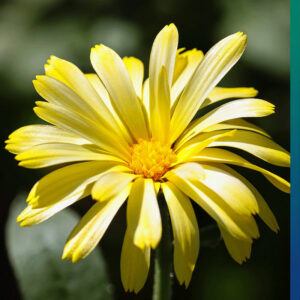
As you can see it’s sometimes hard to define whether yellow food is really yellow, it can also be white on the inside (banana), or orange (pumpkin). That’s why you will find some of the foods cited here also in one of the other colored food articles.
Curcumin is part of the superfoods
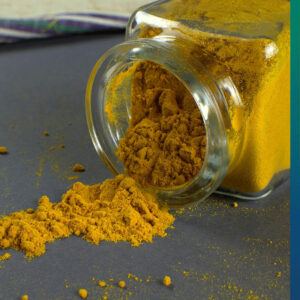
Like saffron, curcumin gives a yellow color to your food. I always think it’s looking festive, whenever Tom adds curcumin to the food. We both love the spice so he does add it often.
Like other yellow food, curcumin is a strong antioxidant and has anti-inflammatory, antibacterial, and antifungal properties. An excellent example of foods that boost your immune system naturally.
Curcumin or turmeric has one downside. The body doesn’t absorb it very easily. Research has shown that you can enhance absorbability by combining it with black pepper and/or fat*.
The latter is because turmeric is fat-soluble. Combine it with fat, green tea, black pepper, or omega 3 fatty acids (which is in fish and shellfish).
In Indian culture, turmeric and black pepper are commonly consumed in tea, often combined with olive oil, coconut oil, honey and ginger.
* Golden Mellow of YourSuper contains 6 superfoods. Two of them are Curcuma and Pepper. The others are Ashwagandha, Ginger, Cinnamon, and Lucuma. All organic certified.
Some recipes of foods that boost your immune system naturally
Turkey (Chicken) with Mango
Ingredients (of course all organic):
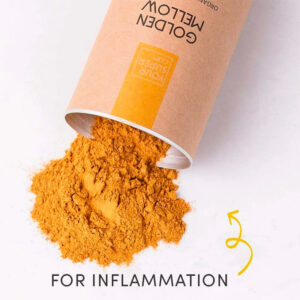
- Buy as much chicken or turkey filet as required for the number of persons that will join the lunch or dinner (e.g. 150 grams per person);
- Fresh ginger (to taste);
- Curry powder or Golden Mellow (to taste);
- Olive oil (to taste);
- Ripe mango. For 4 persons one will do;
- Fresh coriander (to taste);
- Grained dry coconut (to taste).
Preparation
- Cut the fillets into bite-sized chunks;
- Roast the chunks in the olive oil until they are nicely brown;
- Add some water and mix the roasted chunks with the ginger and spices;
- Let the chunks cook for at least half an hour until they are really soft. See to it that the chunks don’t burn;
- In the meantime cut the mango(s) into pieces (as big as the filet chunks), and cut the fresh koriander but not too small;
- Add the mango chunks, the cut koriander, and grained coconut during the last couple of minutes and raise the temperature. See to it that the mango does not fall apart.
TIP 1: Turkey with Mango tastes wonderful with a puree of sweet potatoes and parsnip (2/3 sweet potatoes, 1/3 parsnip).
TIP 2: Never ever add salt or pepper. This will ruin the flavor of any fine dish.
Langostinos al limón (king prawns with lemon)
Ingredients
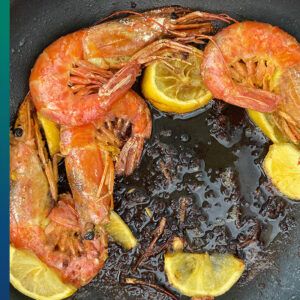
Preferably organic, although that is difficult for the prawns.
- 4 big fresh prawns (in their shells) per person;
- 2 small lemons (or 1 big one);
- Fresh ginger (to taste, but don’t be shy);
- Curcuma powder or Golden Mellow;
- Olive oil (use an amount that covers the bottom of the pan, don’t be shy on this either and use the best oil you can buy).
Preparation
- Use a large pan;
- Heat the olive oil, but pay attention, don’t burn the oil;
- Put the prawns in the pan and fry them on both sides for about 15 minutes on a not too high fire;
- In the meantime squeeze one lemon and grate the outside peel of this lemon;
- Add the lemon juice and grated lemon peel over the prawns at the end of the 15 minutes;
- Cut the other lemon into slices of 1/2 a centimeter and mix the slices with the prawns;
- Add the grated ginger and the spices;
- Cover the prawns and let them simmer for another 5 minutes on a low fire. Done.

Enjoy your meal and stay healthy!
What is your favorite yellow food? Tell us in the comment box below.
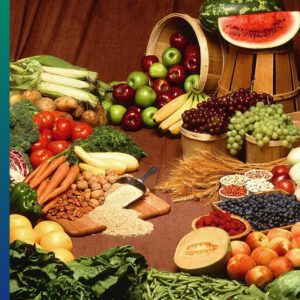
Rainbow food
- Eating a Rainbow of Food Will do a Lot of Good
- Red Food and the Health Benefits of Antioxidants
- What Are the 3 Best Orange Foods we Should Eat Regularly?
- Yellow Foods that Boost your Immune System Naturally
- How to Improve your Diet – and Health – with White Fruits and Vegetables
- Is Spinach the Best Green Vegetable to Eat Every Day?
- Healthy Food Dishes with Blue and Purple Fruits and Vegetables

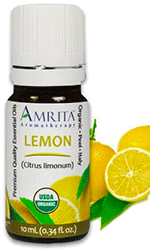
Hi Hannie. Very interesting article. Im always trying to provide my family with healthy food but its not always easy to convince kids to fruits and vegetables. It’s good to know how these product affect us (after reading about yellow foods went through other colors as well from curiosity) and some of your recipes looks really tasty. Looking forward to do turkey in mango, definitely something different and healthier then pizza and other fast food. I hope my kids will love it. Thank you for great post!
Hi Cogito, yes, the recipes are indeed very tasty. I can boast about them because they are not mine, but my husband’s 😉 When the grandkids are here they often love what ‘opa‘ (Dutch for granddad) prepares for them. Nowadays they are getting a bit easier on the vegetables, but there was a time they refused to eat them. So Tom made vegetable burgers that looked like the chicken burgers they were used to.
You can accuse us of cheating on them, but they loved it. Now their dad makes them as well, so it helped. 🙂
Another trick I read somewhere was about a family who had a piece of paper on the fridge with columns of all the colors and the children could tick off a color if they had eaten it that day. It became a game, almost a kind of a contest between the kids, to tick them off all. You could try something like that as well.
This is a great resource for anyone looking for both healthy foods and a way to dress up a plate (or drink). Dandelions are blooming in my yard right now and I appreciate the reminder to go harvest them! I hadn’t thought about adding some of these ingredients to the skincare cabinet as well. Do you have any favorite resources or recipes for making your own at home?
Hi Aly, thank you so much for the compliment. It is fun to look into all the health benefits of food. The more I discover, the more I get interested!
Yes, I sure have a favorite resource: Vivienne Campbell. She is a qualified herbalist and has good recipes for dandelions! Her Facebook page is a huge source of good information.
It’s so great you have dandelions in your garden! We had them a lot in the Netherlands as well, but over here in Spain, I don’t see them much. Not even in the wild nature. That is such a pity.
Oohh Hannie,
I’m loving the food colour series, can’t wait for orange, although a couple of my favourite “orange” foods have been mentioned here. But I forgive you, as you have explained, LOL.
Something I learned from a very young age was to eat foods with a variety of colours, in fact the colours of the rainbow I was taught (although I haven’t eaten many “blue” foods in my time, bar blueberries, which I love).
However, the lighter “sun” colours of orange and yellow are among my favourites.
Funnily enough, two of my favourite foods ever, that could be considered both orange and yellow, have been mentioned here today.
I absolutely adore mangoes and pumpkin.
In fact, I eat them both every single week, and multiple times.
I’m glad you mentioned curcumin (or tumeric) as it is one of those superfoods that many people aren’t aware of.
Coming from an Indian background, I am more than familiar with tumeric.
I will say that the actual taste is horrible, especially if used in large quantities.
It’s best to use just a sprinkling. In fact, in Indian cooking it is used more for colouring than flavour – so that tells you everything you need to know.
That being said, tumeric when used in moderation can liven up a curry, and it can do wonders to a glass of hot milk.
Plus, the fantastic health benefits are simply out of this world.
A great read Hannie, Loved it.
I can’t wait to learn about the other food colours.
Do we have to do Green? No-one likes Green, LOL.
Partha
LOL, of course, we have to do green as well. And only kids hate green, right? 😉
With herbs and spices and all kinds of addition (nuts, raisins, etc) almost every kind of food can be turned into a delicious meal.
As you probably know Tom is the cook in our house, so I don’t know if he is sparse on the turmeric or not. I guess he is not. Usually, he uses a lot of herbs or spices in the food. Especially garlic 🙂 Anyway, we both love turmeric a lot.
Oh, and I already have the article about orange food, Partha. In fact, it was the first article I wrote about the colors of food because orange is the national color of the Netherlands.
Very good, that you already as a young child learned to value the rainbow colors of food. When I wrote the article about blue and purple food, I too thought there were not many of those. But after investigating it, there are more fruits and vegetables in that category than I expected. Blueberries being the best of them because they are so healthy for our brain!
Hi Hannie! Again a great article about food colors and nutrients.
I love all the colors in food, especially green, combined with berries, mangoes, pineapple, apples—a great way to consume as many nutrients as possible. Also, a great way to include mangoes is in curries. I love the sweet taste and the spices.
To live healthy is yummy, very tasteful! In winter, I love pumpkin soup or as a vegetable. But in summer, I love colored salads, including seeds, nuts, fruits.
And I love blueberries; they taste so fantastic. Your recipes make me hungry while reading them. I certainly will try them out and let you know the results! For sure you get more fresh food in Spain than we get here. If I stick to seasonal vegetables and fruits, I get all the nutrients, but you have far more sunny days, so this is, of course, the best you can get. 🙂
Yes, we are lucky, Sylvia. Not only more sunny days but also more harvests. It’s March now and already we eat ‘from our own garden’. Carrots, spinach, a kind of cabbage, broad beans. We even had a couple of strawberries, but they hadn’t caught enough sun, so they were too hard.
The only thing that refuses to grow in our garden is pumpkin. Strange, isn’t it? Such an easy thing to grow. I guess the soil is not right for pumpkin here. Maybe in a few years, after we have fertilized it enough with our compost pile.
Yes, blueberries are marvelous. I love them as well. 🙂
Hey, an amazing article. Didn’t know so many great facts about yellow foods. In the last few years, I use curcumin a lot when cooking. I always use it when I cook homemade soup and when I cook chicken breasts. It just gives some color and some amazing taste.
However, I didn’t know that it’s hard for our body to absorb it, and I’m going to start using black pepper together with curcumin. Thanks for that 🙂
Also, since I love chicken a lot, I’ll have to try your recipe, and I’ll reach to you with my thoughts.
Hi Petar,
Thank you for your comment and compliments.
Curcumin is also absorbed by the body when you use fat. For instance, from the chicken you prepare. Or the oil in which you prepare the chicken.
I also use it in mashed sweet potatoes. In which case, you indeed have to add some black pepper. However, I always add a lot of things to the mashed sweet potatoes, such as cashew and almond nuts or walnuts. Fresh garlic and paprika also mix in very nicely. Of course, you can also use regular potatoes.
The advantage of chicken is that you can do so many things with it. Today I made goulash from chicken. With a lot of garlic, red and green paprika, and mushrooms. It smells great, probably tastes as great as well. About food, I could go on writing forever …
But for now, stay safe, stay healthy.
Regards,
Tom